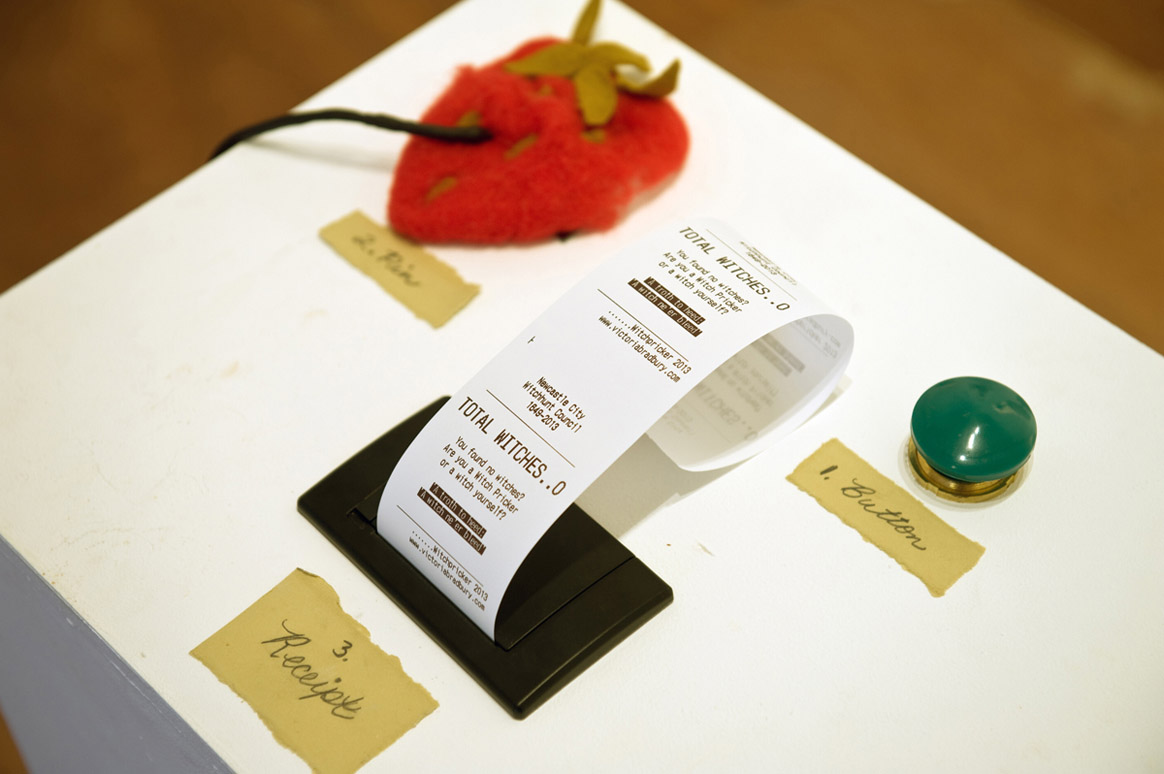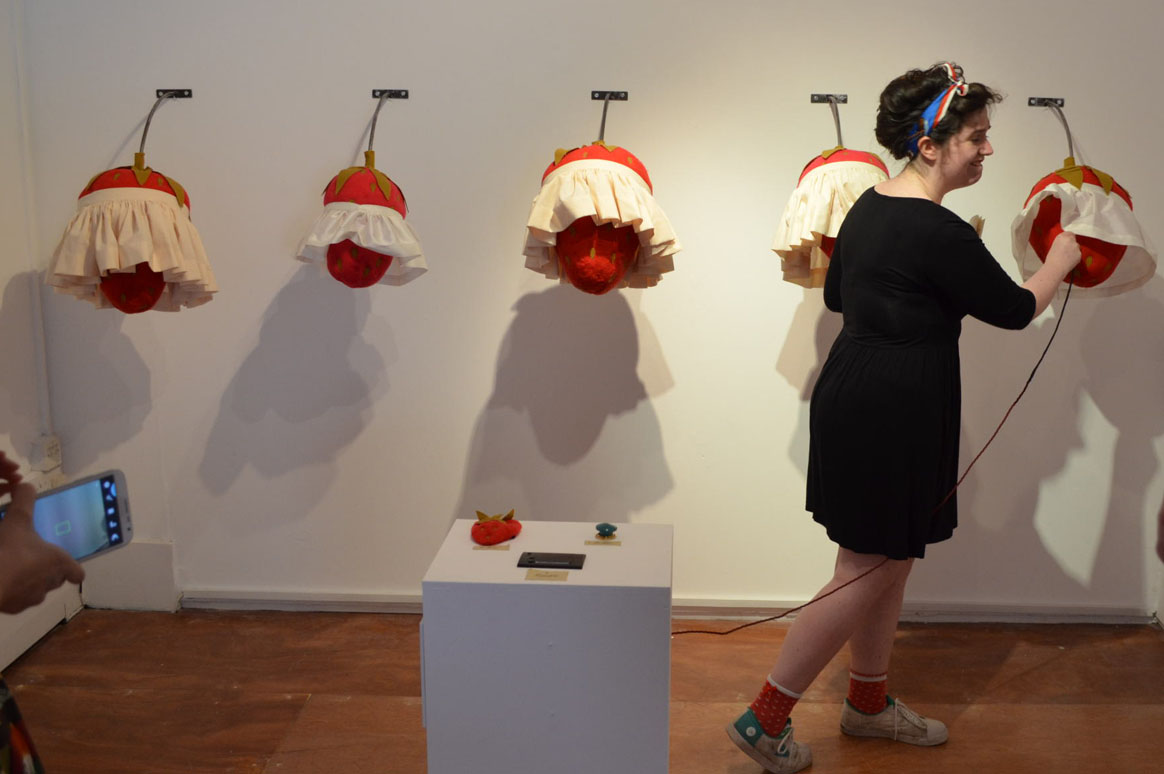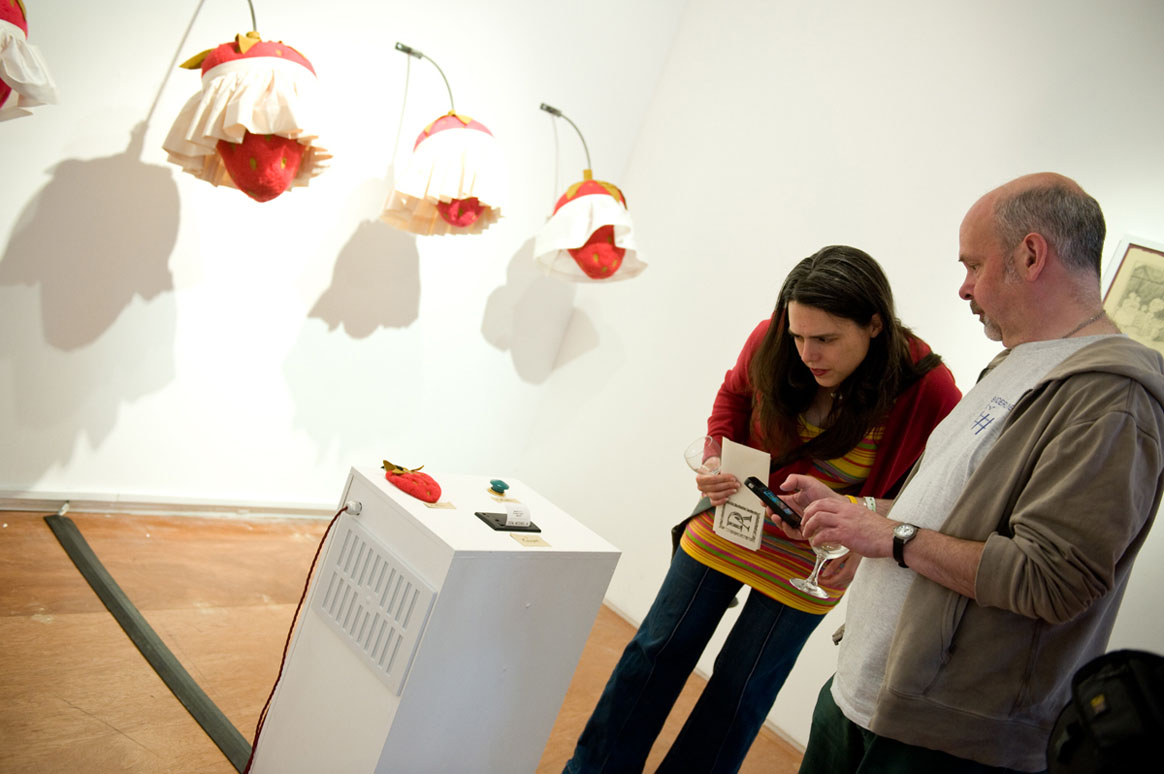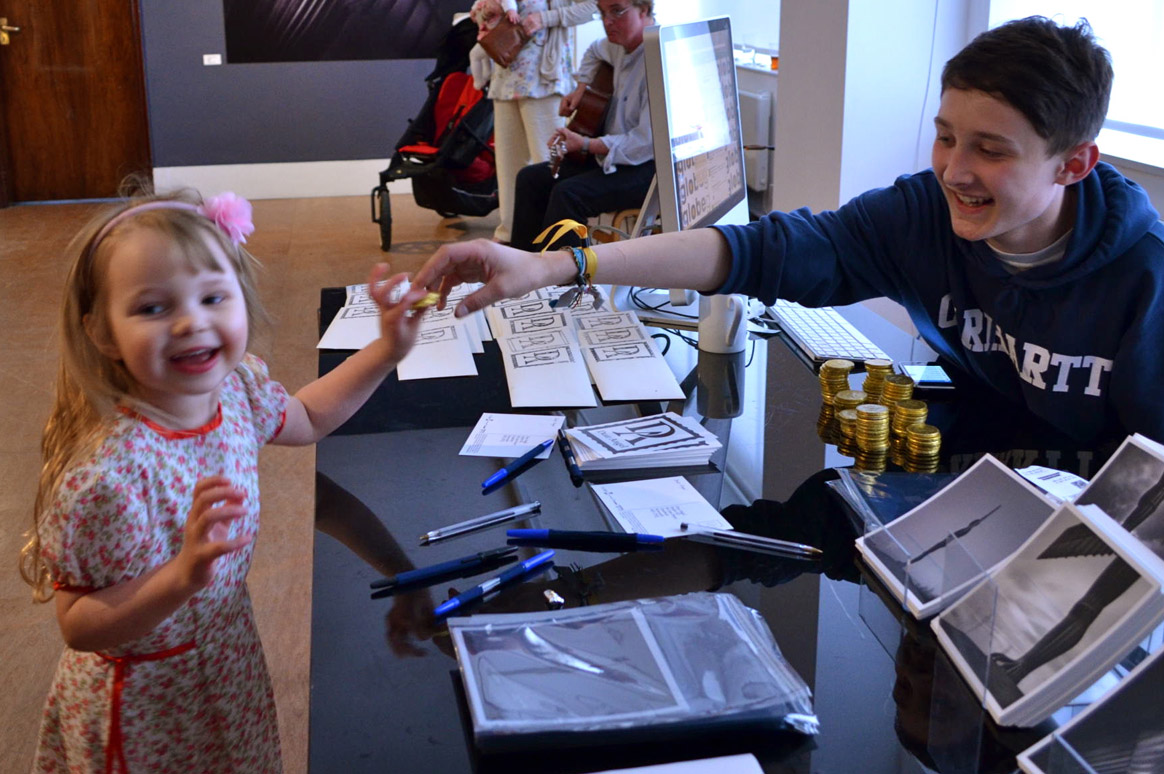Toast
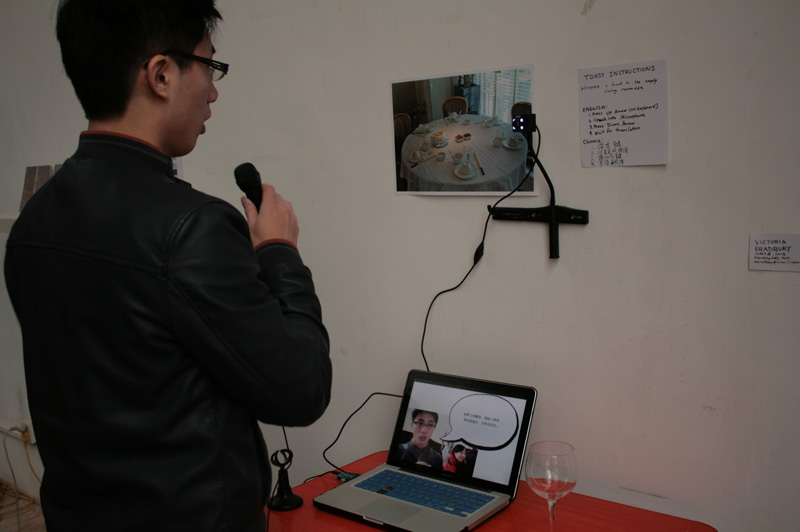
Toast: Feijiacun, Beijing. 2012
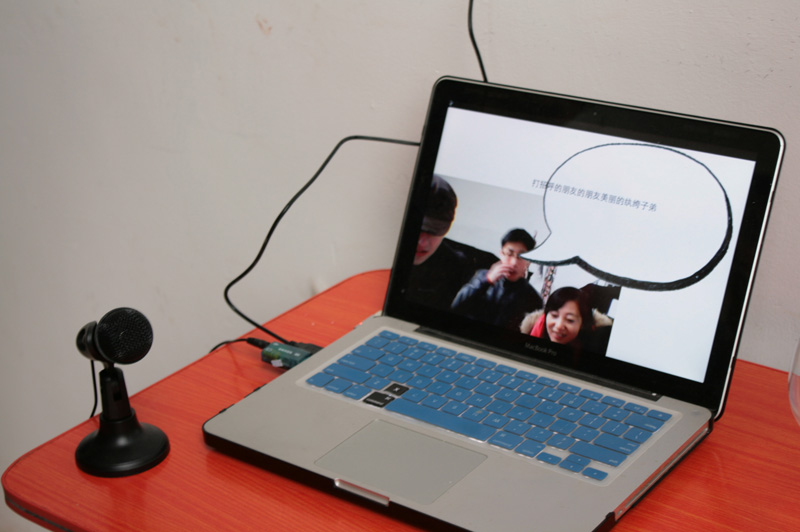
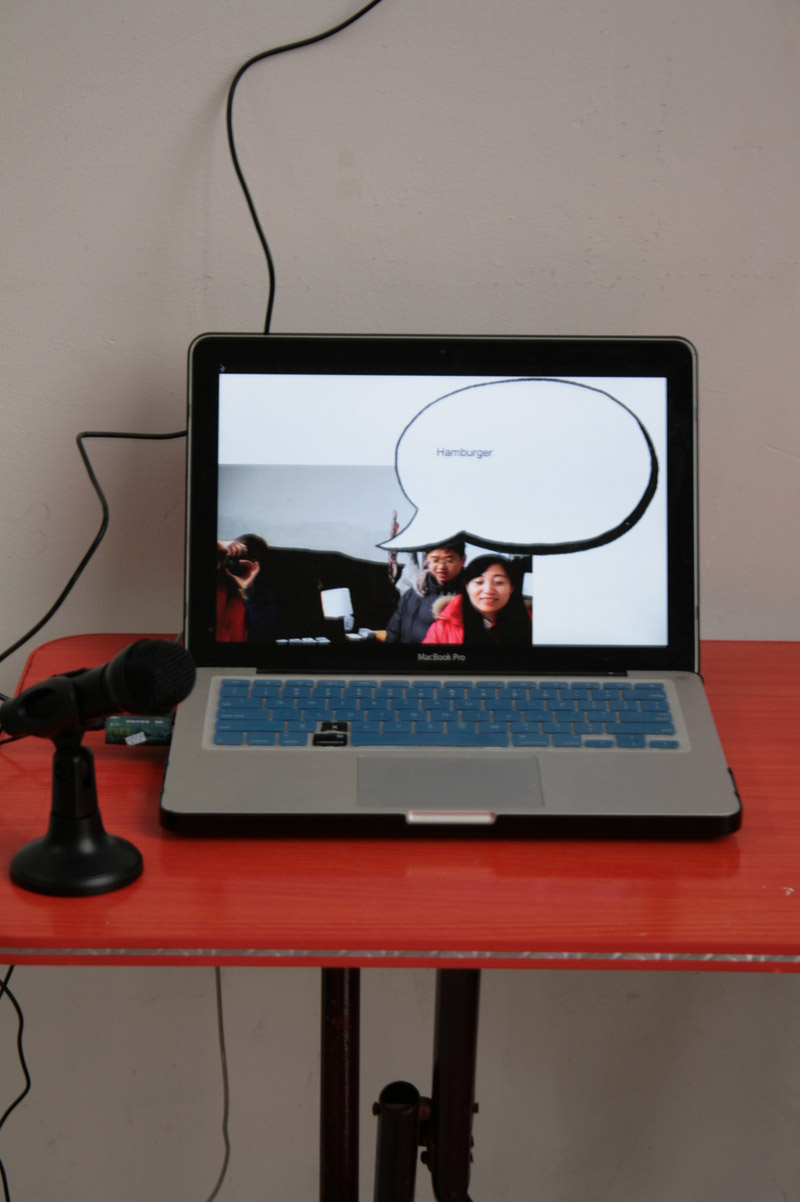

Toast: Barcamp, Shanghai. 2012
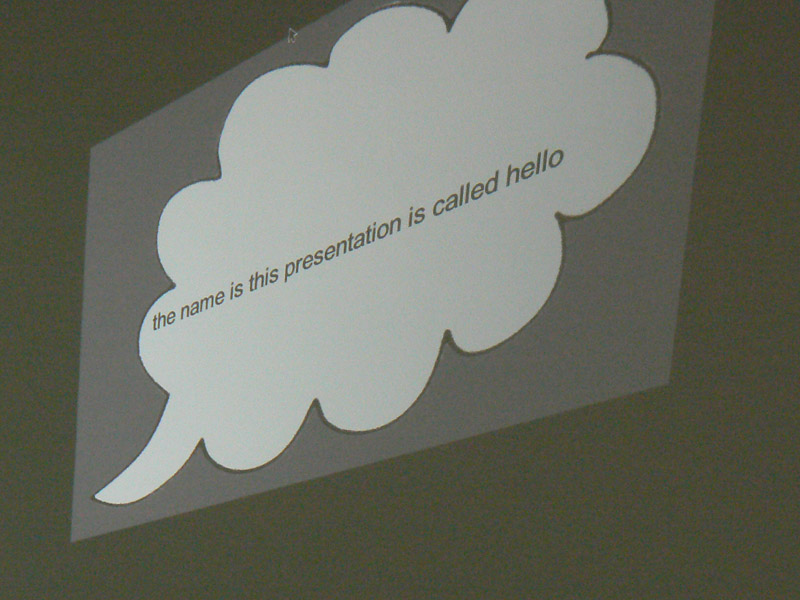
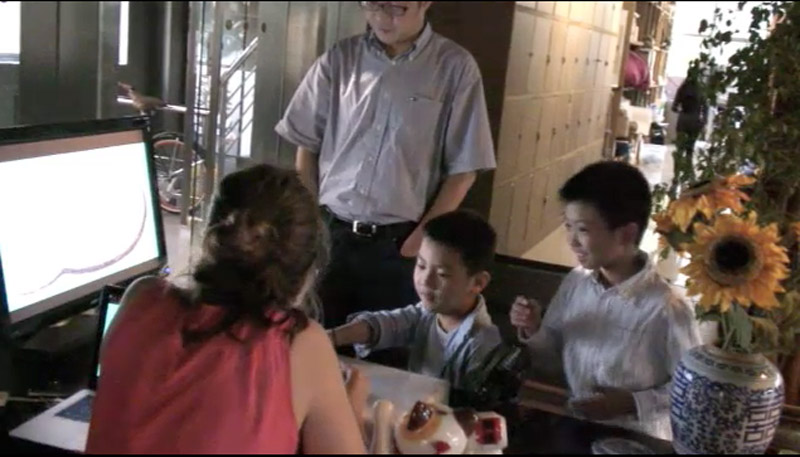
Toast: Xinchjian Makerspace, Shanghai. 2012
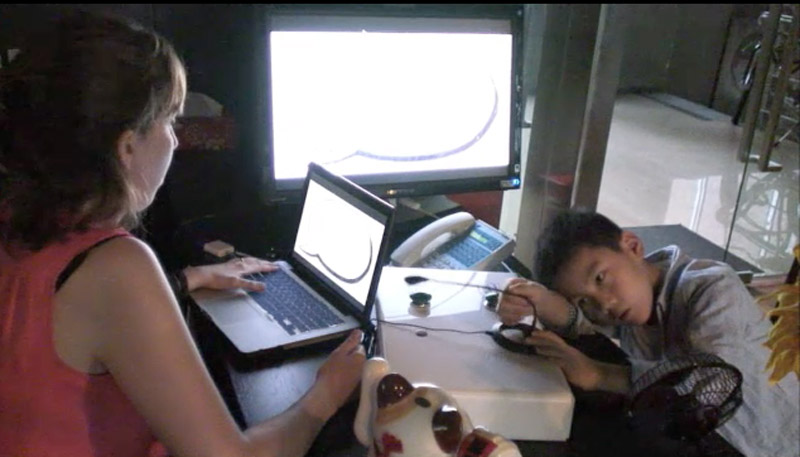
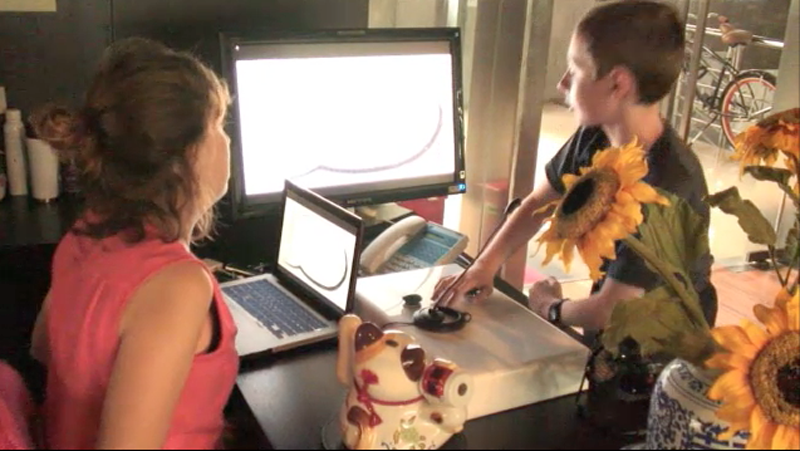
Toast is an iterative series of projects that use a coded device to translate the speech of a performing participant. This work was initiated in 2011 while I was living in China with limited Mandarin language ability. In Beijing, I quickly became interested in making a machine translator that would allow me to take conversation to a more complex level while highlighting the ridiculousness of using a computer to communicate rather than taking the proper steps to learn a language.
In Feijiacun, the Toast installation included instructions for visitors that were posted on the wall in both English and Mandarin. The text asked a participant to address his toast to an adjacent photograph of a common restaurant table, set with empty chairs in the round. This table image served as a blank canvas on which the visitor could imagine people seated for a meal.
The visitor approached the computer, read the instructions, picked up the microphone in one hand (and optionally an empty wine glass in the other), and then spoke a toast to his imagined companions at the dining table. His words were then sent through the custom Processing sketch. Here, speech was turned into text in the spoken language. This text was sent to Google Translate where it was translated it into the “opposite” language (English <> Mandarin). Finally, this translation was sent back to be displayed on the screen. Throughout the interaction, a web cam picked up a live-feed of the speaker’s face, which was situated next to a speech bubble containing the final result of the translation.
In Toast, the translations returned by the code were almost always inaccurate and not a representation of what the speaker had actually said. This defeated the initial purpose of the project: to help a non-native speaker to be better understood. Instead, it highlighted the ineffectiveness and humour of machine translation.
Most of the people attending the Feijiacun exhibition could speak some English and some Mandarin, among other languages. They became quite engaged with the translation idea and gathered in groups, creating a playful atmosphere around the spoken utterances, the doubled images of the participants on-screen, and the floating speech-bubble translations.

